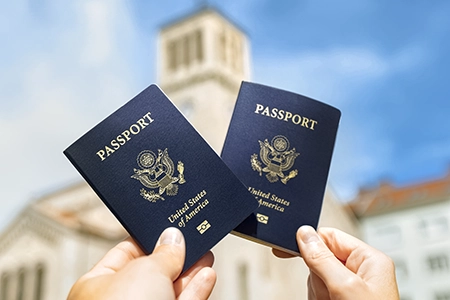In today’s fast-paced digital world, technology has played a crucial role in breaking down language barriers and promoting communication across different cultures. One of the most significant technological breakthroughs in this regard is machine translation (MT), which has transformed how we approach language translation. From its early days of being rule-based systems to the sophisticated AI-driven models of today, machine translation has come a long way. This evolution has greatly benefited various language pairs, including the increasingly popular English-to-Turkish translation.

Before we begin…
Looking for legal, technical or scientific translation services that are fast, precise, and budget-friendly? Look no further! We offer top-notch translation solutions at unbeatable rates. Contact us now to get a quote and let us help you communicate effectively in any language.
Initially, machine translation systems struggled to translate complex language pairs like English to Turkish accurately. However, these systems have significantly improved handling such linguistic challenges with technological advancements. Today, machine translation systems are more than just tools for quick translations. They are evolving into sophisticated platforms capable of understanding and translating nuanced language.
Machine translation has become essential in today’s globalized world. It is at the forefront of breaking down language barriers, facilitating international communication, and connecting diverse cultures. As we look into the future of machine translation, we will explore how recent advancements are shaping this field, the challenges that lie ahead, and the evolving role of human translators in an AI-driven era. The focus on improving translation technologies, including English-to-Turkish translation, is a testament to the growing need for more inclusive and versatile translation technologies. This blog post aims to provide insights into the future trajectory of machine translation, highlighting its potential to revolutionize communication across languages and cultures.
Current State of Machine Translation
Machine translation (MT) is a technology that helps translate text from one language to another. This technology has come a long way, especially in challenging language pairs like English to Turkish translation. Today’s MT systems have evolved beyond basic models of the past, thanks to the advent of neural machine translation (NMT).
NMT uses deep learning and artificial neural networks to help machines understand language better. It’s like teaching a machine to think like a human brain, which results in more accurate and natural translations. In English to Turkish translation, NMT systems can better understand the differences in how the two languages work, offering translations that make more sense and are more appropriate.
Despite these advancements, some challenges still need to be addressed. For example, machine translation still struggles with complex linguistic elements like idioms, specialized jargon, and cultural nuances. Additionally, machine translation quality can vary depending on the language pair involved. High-resource languages like English and Spanish often see better results. In contrast, lower-resource languages like Turkish may not achieve the same level of accuracy.
Another important thing to remember is that machine translation requires much data to work well. This means that the output quality is heavily dependent on the quality and quantity of the input data. For languages like Turkish, where there might not be as much data available, achieving the same quality level can be challenging.
Machine translation has come a long way, but there is room for improvement. As we continue developing and refining these technologies, we can look forward to even more capabilities and wider applications to break down language barriers.
Technological Advancements and Innovations
The way we translate languages using machines is getting better and better all the time, thanks to new technology and ideas. This means we can do more with machine translation than ever before, including helping people who need to translate between English and Turkish.
AI and Deep Learning
Machine translation (MT) has come a long way, thanks to the integration of artificial intelligence (AI), specifically deep learning algorithms. Deep learning is a type of AI that uses neural networks to analyze and interpret large amounts of data. By using this approach, machine translations have become much better at understanding the context and nuances of each language, resulting in more accurate and fluent translations. For languages like English and Turkish, deep learning has significantly improved the accuracy of translations by processing their unique structures and characteristics.
Neural Networks and Language Models
Neural networks advanced computer models have been incredibly helpful in improving machine translation (MT). In particular, two types of neural networks, recurrent neural networks (RNNs) and transformer models, have proven especially useful. These neural networks are great at understanding language because they can remember what was said before and use that information to create more accurate translations. This is especially important for languages with complicated grammar, like Turkish.
Now, even more advanced language models are out there, like Google’s BERT and OpenAI’s GPT. These models can understand and write text that sounds like a real human wrote it, which is impressive! When translating from English to Turkish, these models can understand both languages well, making for translations that are accurate and capture the original text’s style and culture.
Future Potential
The rapid developments in AI and neural networks have opened up new possibilities for machine translation that were once thought impossible. Thanks to these advancements, we’re getting closer to a future where translation systems can handle more complex translations with greater accuracy and fluency. This is especially exciting news for languages that have been historically difficult to translate, like English to Turkish, where better models can now handle the nuances of the language more effectively.
The progress in technology and machine translation innovation is changing how we look at language translation. With the integration of AI, deep learning, and neural networks, the future of machine translation is promising, offering the potential for more accurate and nuanced translations in various languages, including English to Turkish.

Bridge Business and Cultural Gaps
Expand your business reach with our tailored translation services. Specializing in business, finance, and banking translations, we understand the importance of accurate and culturally nuanced language in corporate communication. Our services are designed to resonate with your target audience, ensuring that your business message is conveyed effectively and professionally. From annual reports to marketing materials, we provide translations that reflect your company’s excellence..
Challenges Facing Machine Translation
Even though machine translation has come a long way, it’s still not perfect. Especially when translating from English to Turkish, which is a difficult language pair. The main reason is that language is complex, and technology isn’t quite there yet to handle all the nuances.
Handling Context and Idiomatic Expressions
One of the biggest problems with machine translation is accurately conveying the meaning of phrases and expressions unique to different languages. Some words and expressions have different meanings depending on the situation they are used in, which can make it difficult for a machine to interpret them correctly. This is especially true for idiomatic expressions common in certain languages but not others. For example, certain phrases in English and Turkish can be confusing for machine translation systems, leading to technically correct translations that don’t make sense in the intended context.
Cultural Nuances
Translating languages is not an easy task, especially when it comes to translating English to Turkish. This is because language is closely related to culture, and different cultures have unique phrases and words that might not be equivalent to other languages. Machine translation systems are getting better at translating languages but still struggle with these cultural differences. This can sometimes lead to misunderstandings or incorrect translations.
Translating Less Common Languages
Machine translation has come a long way in translating commonly spoken languages. However, it still faces a challenge in translating languages that are less widely spoken or have fewer resources available for training the machine. A good example is the Turkish language, which has less data to train the machine than English, Spanish, or Chinese. This makes it difficult for the machine to translate Turkish accurately and fluently. To solve this problem, developing more comprehensive linguistic databases and advanced algorithms that can learn from limited data is important.
Quality and Consistency
One of the challenges of machine translation is ensuring that translations are accurate and consistent. Sometimes, machine translation works well, but other times, it makes mistakes. This can be a problem in important situations where the translation must be correct, like legal or medical documents. Translating from English to Turkish is especially difficult because it’s hard to ensure that every translation is good across many different types of writing.
So, while machine translation is improving, there are still some big problems to solve. For example, machines don’t always understand jokes or expressions specific to one culture. There are also some languages that machines find harder to translate than others, like Turkish. That’s why people must keep improving machine translation so that we can use it to translate many different languages and types of writing reliably and accurately.
The Role of Human Translators in the Age of AI
In today’s world, technology like AI and machine translation is advancing rapidly. However, even with these advances, the need for human translators is still very important. Especially when it comes to translating complex language pairs like English to Turkish, the expertise of human translators is essential. They make sure that translations are accurate culturally relevant, and capture the nuances of language that machines can’t quite understand yet. In short, human translators play a crucial role in making sure that translations are done right.
Complementing Machine Translation
Machines and humans both play a role when it comes to translating languages. Machines can quickly translate easy-to-understand texts, but humans are better at interpreting and conveying the subtleties of language, like idiomatic expressions and cultural references. For example, in translating English to Turkish, a human translator can pick up on the cultural nuances that a machine might miss or misunderstand.
Refining and Supervising MT Outputs
In this digital age, machine translators can translate text from one language to another. However, we need human translators to ensure the translation is accurate and easy to read. These translators check and correct machine translations to ensure that they’re correct and make sense. This is particularly important when the text is about something that needs to be precise, like legal, medical or technical documents. For example, a human translator may need to fine-tune an English-to-Turkish translation to ensure that the words are correct and make sense in the Turkish context.
Bridging the Gap Between Technology and Human Language
People who speak multiple languages play an important role in helping computers understand and use language correctly. They help improve computer systems that can translate languages by providing feedback and corrections. This feedback is valuable in making the computer algorithms better and more able to handle the complexities of different languages, like translating from English to Turkish.
The Irreplaceable Human Element
Even though AI has made significant progress in translation, human translators play a crucial role in the process. They bring empathy, cultural knowledge, and understanding of language nuances. These qualities are essential in translations that require high sensitivity levels or in texts where tone and style are as important as the content itself, such as literature, marketing, or creative writing.
The role of human translators in the age of AI is not diminished but redefined. They ensure that machine translation is accurate, culturally relevant, and contextually appropriate. Their skills and expertise are particularly crucial in complex language pairs where the nuances of language and culture play a significant role in effective communication. As AI continues to evolve, the collaboration between human expertise and technological innovation will remain key to overcoming language translation challenges.
Final Word
As we look at how machines can help us translate languages, it’s clear that technology and human expertise working together is the way of the future. While machines can translate languages like English to Turkish quickly and accurately, human translators bring a deeper understanding of the nuances of language and culture. The best way forward is for humans and machines to combine their strengths to create better translations that connect people across languages and cultures. As technology continues to improve, human translators will play a key role in ensuring that translations are accurate, culturally relevant, and meaningful.

Before you go…
Looking for superior human translation services that are fast, precise, and budget-friendly? Look no further! We offer top-notch translation solutions at unbeatable rates. Contact us now to get a quote and let us help you communicate effectively in any language.
Further Reading:
- Progress in Machine Translation, Haifeng Wang



